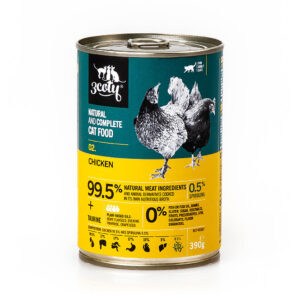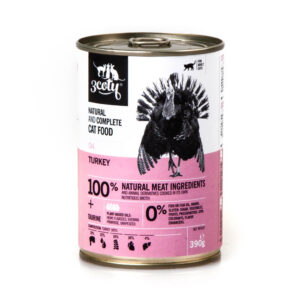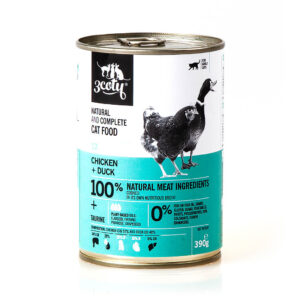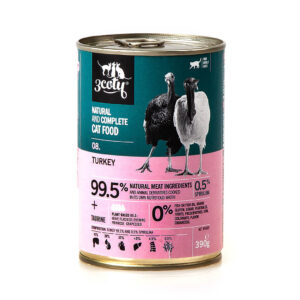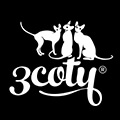Introducing the new Antarctic krill range
When optimizing the nutritional content of our natural wet cat food, we always seek out the best possible ingredients. By that, we mean that our ingredients provide nutritional benefits, be easy to absorb, and should be close to what a cat would eat in nature. Our experience with Cookie, who was allergic to all fish products, sent us on a search for alternative sources of Omega-3 and -6 fatty acids. They are vital for general cell health and particularly valuable in supporting a healthy coat and skin and should be part of a fully balanced diet.
Our search
Our first search found these fatty acids in plant oils, which are part of many of our flavors. This is a good source of these nutrients and local organic farms produce the high-quality oils we need. However, we felt that there must be a marine source of Omega-3 and -6 which would not cause the same allergic reaction as fish.
Aker BioMarine gave us the answer we were looking for: Antarctic krill.
What is krill?
Krill are small crustaceans and are found in all the world’s oceans. Although they live in the oceans they are not fish. Examples of larger crustaceans, that may be more familiar are lobsters and shrimp. If you have ever eaten these larger versions, you will know that they are predominantly meat, covered in a thin chitin shell.
The tiny Antarctic krill we use are near the bottom of the food chain and eat phytoplankton and some zooplankton. Overall, krill makes up one of the largest biomasses in the Southern Ocean where whales, seals, penguins, and fish eat them.
This marine animal, which is not fish, was very attractive to us. Krill is not an allergen the way that fish and oil can be. It is a superior animal source of Omega-3 fatty acids that is easily absorbed by cats to which the immune system reacts differently than to fish.
Nutrient packed
Any form of krill is packed with valuable nutrients. We keep talking about the importance of Omega-3 and -6 fatty acids in a cat’s diet. But krill has many more nutrients. Choline is essential in brain development, learning process and nerve transmitters and supports healthy liver function. Astaxanthin can support and enhance the immune system of cats of all ages making the immune cells more flexible and resistant. And of course, being an animal, krill is packed with protein.
This marine source of nutrients is very bioavailable, meaning that animals with short digestive systems, like cats, can absorb the nutrients easily. The feline metabolism has evolved to extract nutrients from animals and does not process raw plant material very well. Identifying an animal source of these fatty acids is very exciting.
The Antarctic krill has the added benefit of living in the Southern Ocean, one of the cleanest oceans on Earth. Unlike farmed salmon or fish caught in busy shipping lanes around Europe, Antarctic krill is not exposed to common water pollutants or heavy metals.
Sustainable harvest
Aker BioMarine harvests krill in the Antarctic using sustainable catch methods and carry certifications from MSC, ecoharvest, Sustainable Fisheries Partnership and Antarctic Wildlife Research Fund. We were very excited to find this after recognizing the value of krill in providing a valuable source of nutrients. We would have been very torn had we found this fantastic ingredient and then identified that it was damaging to the environment. Our commitment to UN Global Goal 12 on sustainable production and consumption includes understanding our suppliers’ stance on this topic and we are proud to work with them.

This is Krill
Krill are small crustaceans of the order Euphausiacea, and are found in all the world’s oceans. The name krill comes from the Norwegian word krill, meaning “small fry of fish”, which is also often attributed to species of fish.
Krill are considered an important trophic level connection – near the bottom of the food chain – because they feed on phytoplankton and (to a lesser extent) zooplankton, converting these into a form suitable for many larger animals for whom krill makes up the largest part of their diet.
In the Southern Ocean, one species, the Antarctic krill, Euphausia superba, makes up an estimated biomass of around 379 000 000 tonnes, making it among the species with the largest total biomass.
Of this, over half is eaten by whales, seals, penguins, squid and fish each year, and is replaced by growth and reproduction. Most krill species display large daily vertical migrations, thus providing food for predators near the surface at night and in deeper waters during the day.
The krill products
In the first instance, we are launching three products with krill:
15. CHICKEN + KRILL
The first of our range of natural, balanced cat foods that includes Krill as one of the protein sources. Its marine Omega 3 and 6 content allows fully balanced nutritional needs to be covered without the inclusion of any plant oils. The chicken content provides it with a taste familiar to most cats.
17. TURKEY + KRILL
Omega 3 and 6 fatty acids are not produced in a cat’s body and must be eaten to provide their benefits. Antarctic Krill is a superior source of these nutrients, sustainably harvested and makes up 5% of this flavor. This second krill-enhanced duoprotein cat food enables high levels of Omega-3 in a cat’s diet for those adult cats who prefer turkey to chicken.
18. TURKEY + KRILL Coat Support
As well as the optimal Omega 3s, this flavor has higher levels of biotin than others due to its brown algae content. Also called vitamin B7, biotin plays a strong role in supporting the growth of fur in cats. Together with easily absorbed Omega-3 fatty acids, it contributes to strong hair growth.
How can you tell it’s krill?
Krill has a very distinctive smell and color. When you open one of the tins of our new range you will see the reddish tinge to the food and immediately smell its marine content. From outside the tin the smell is not obvious, however, we have chosen our labelling to reflect this color. All flavors with 5% krill content have an orange label so you can immediately see which tins contain this exciting ingredient.





